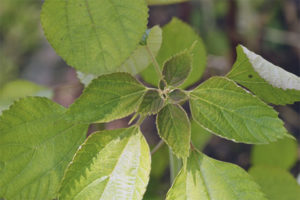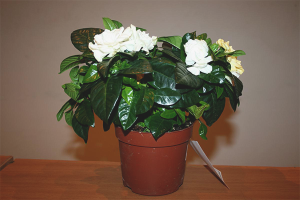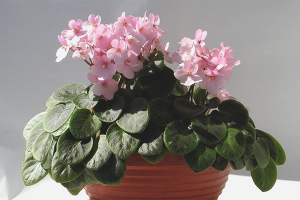The content of the article
Cineraria is a plant in the family of the aster family of the godson. There are annual and perennial species, the plant can be grassy or bush. The Canary Islands (Spain) are considered its Homeland. Currently, there are many varieties of cineraria adapted to a colder climate than it is on the islands of paradise. Indoor cultivated hybrid varieties that bloom from November to March and have a beautiful bright color.
How to care for different varieties of cineraria
Cineraria looks incredibly impressive in mixborders and flower beds.
Cineraria Seaside
Seaside cineraria (Cineraria maritima) is known to many as a stunted silver-gray plant with carved pinnate leaves that decorate the rims of flower beds and frame street floral arrangements.
In the Mediterranean, in the homeland of this variety of cineraria, it is grown as a biennium. But the plant does not tolerate frost well, so in a temperate climate it grows until October, and then it is dug up and thrown away. On the Mediterranean coast, in the second year, it produces a yellow inflorescence of coltsfoot or dandelion. They do not represent any aesthetic value, therefore only floriferous Cineraria maritima is used in floriculture. If from autumn it is covered with fallen leaves, the plant will survive the winter well, and from early spring it will delight with frosty-silver carved leaves. Features of care for cineraria seaside are as follows:
- The plant loves the sun, because its homeland is sunny Italy, it grows poorly in the shade. Land in open, well-lit areas.
- Does not need frequent watering, easily tolerates drought. It is quite possible to water only once during planting, this will be enough.
- It grows well on light loose soils, not necessarily nutritious.
- Seaside cineraria is grown with seeds as an annual, but for the winter you can cover an annual plant. In the spring, the leaves are harvested, the frozen shoots are cut, in the summer, the resulting inflorescences are removed.
Bloody cineraria
Bloody cineraria (Senecio cruentus) is a bushy plant with oval leaves and many variegated inflorescences similar to daisies. Senecio cruentus has a variety of varieties, varying in size and method of care.
- Grandiflora variety has petals with a white base and a bright colored rim. The plant reaches a height of 45 cm, therefore, it needs support.
- Variety Stellata is a multitude of star-shaped inflorescences forming a sprawling crown. The plant has a tall, over 70 cm, trunk. This variety also needs support when growing.
- The Multiflora Nana variety has a compact form and a low stem up to 40 cm. It does not need support.
Bloody cineraria is most often used as a potted culture. Caring for her is as follows:
- watch the temperature in the room, it should not exceed 18 degrees
- place the flower pot on a well-lit and ventilated window sill
- prevent drafts
- watering is done as the top layer of the earth dries
- fertilizer for flowering plants every 2 weeks
- leaves are sprayed in hot weather from a spray bottle
- faded flowers are removed
- during flowering, the plant is cleaned in a cool place, it is possible in the hallway.
Fine cineraria
Elegant cineraria (Cineraria elegans) grows in wildlife in African countries. Leaves and stems are covered with sticky hairs, reaches a height of 60 cm, has a strong branching. Inflorescences in appearance resemble chamomile flowers of bright exotic colors.In a temperate climate, elegant cineraria also took root and fell in love with gardeners for their unpretentiousness and attractive appearance. It blooms not so magnificent, as bloody cineraria, but not so demanding on the growing conditions. Variety Ligulosus is a hybrid, terry inflorescences are colored with all shades of the rainbow. The Nanus variety does not grow above 25 cm, and is more used as a potted home crop. Look after elegant cineraria as follows:
- Elegant cineraria loves sunlight and warmth, so it is placed on well-heated window sills or in open sunny areas of the garden.
- It is enough to immediately plant the plant in soil rich in organic fertilizers, and you do not need to think about periodic top dressing.
- Take care of good drainage; elegant cineraria does not like stagnation of water.
- A street plant does not tolerate frost, even if it is covered with foliage or spruce paws.
- Limit watering, the plant has enough natural rainfall. Water only in case of drought.
Hybrid cineraria
Hybrid cineraria (Cineraria hybrids) in appearance resembles a bush of violets. Rough and rugged leaves are 15-20 cm long; the entire bush is covered with many buds and basket-shaped flowers with a diameter of 5 cm, resembling daisies. The color of the flowers is two-tone or plain (blue, blue, pink). The birthplace of hybrid cineraria is the Canary Islands, where the plant grows in cool mountain forests. In a temperate climate, it is grown in greenhouses. The plant reaches a height of 30-35 cm. The most common varieties of hybrid cineraria are:
- Variety Sympathy, the highest variety, reaching a height of 70 cm with a flower diameter of 8 cm.
- The Double variety has a two-tone color, has a height of 35-60 cm and a flower diameter of 5 cm.
Hybrid cineraria care has its own characteristics:
- place the flower pot on the windowsill facing north
- does not tolerate bright sunlight and direct rays
- the buds are laid at a temperature of 10C, and the pots are put on the balcony during this period
- when flowering occurs, the pot is transferred to the room
- water the plant a lot and often on hot summer days
- put the pots in the pan and pour water there
- spray leaves with spray water
- the plant especially needs to be fed every week
What fertilizers should be fed cineraria
Fertilizer "Agricola for indoor, garden flowers and alpine slides" is suitable for feeding both indoor and garden varieties of cineraria. Available in the form of sticks sticking into the ground. Under the influence of moisture contained in the soil, the plant is fueled by macro- and microelements. Sticks protect the roots from rot and harmful insects. The drug is convenient if you can get to the cottage only on the weekend.
Fertilizer "Agricola-Aqua for indoor plants" is added to the water and used for root dressing. It is a growth stimulator that saturates the soil with beneficial substances. Helps increase flowering, stimulates plant immunity.
Plant Growth Regulator “Growth Moment for Flowers” is an absolutely natural product made on the basis of yeast. Makes the plant more resistant to adverse conditions (drought, frost), reduces stress during transplantation, prolongs the flowering period and enhances the brightness of the color.
Liquid fertilizer “Peat Oxidate for Flowers” contains a 4% concentrate of peat, rich in amino acids and nutrients. The drug is safe for humans, flora and fauna, completely non-toxic. It is soluble in water, introduced under the root. Promotes growth and flowering, increases disease resistance and tolerance to adverse conditions.
Cineraria is a very beautiful plant. It can be grown both in the country and at home. Choose a variety for yourself, taking into account the possibilities and features of care.Subject to the rules, the plant will delight with bright abundant flowering for many years.












Submit